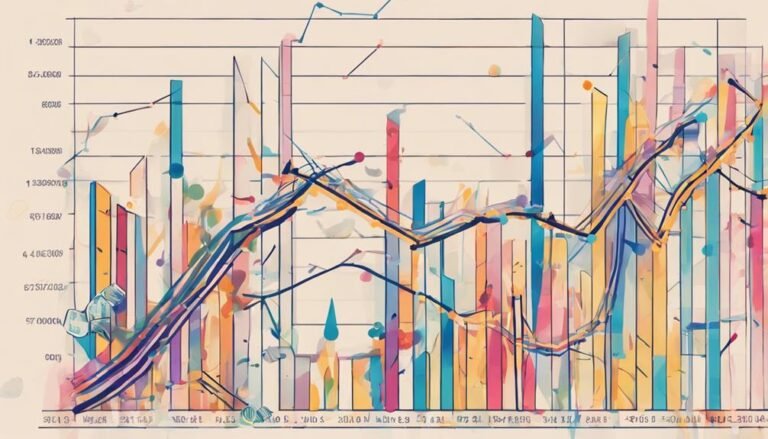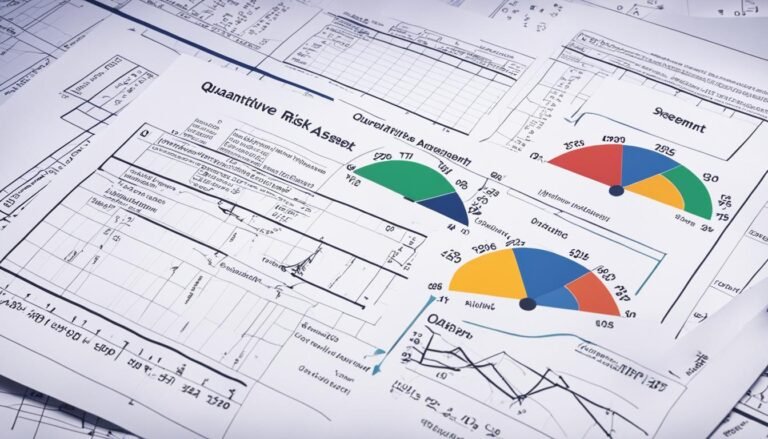Quantitative Trading Algorithms
Ever wondered how a bunch of numbers and equations could possibly dictate the fate of your investments?
Plunge into the world of quantitative trading algorithms, where algorithms make split-second decisions on your behalf, potentially shaping the future of your financial portfolio.
But be prepared, as the allure of profit is accompanied by a shadow of uncertainty.
Key Takeaways
- Data analysis and algorithms drive quantitative trading decisions.
- Statistical models enhance risk management and optimize trading performance.
- Programming languages like Python, C++, and R support algorithmic trading strategies.
- Future trends include AI integration, high-frequency trading growth, and alternative data utilization.
Evolution of Quantitative Trading
The evolution of quantitative trading can be traced back to the early 20th century when statistical methods began to be applied to financial markets. Historical trends show that quantitative trading has steadily grown in importance over the years, with technological advancements playing a pivotal role in shaping its development.
In the past, traders relied heavily on gut feelings and intuition to make investment decisions. However, with the advent of computers and sophisticated algorithms, the landscape of trading underwent a significant transformation. The use of historical data to predict future market movements became more prevalent, leading to the rise of quantitative trading strategies.
Technological advancements such as high-speed computing, big data analytics, and artificial intelligence have further propelled the evolution of quantitative trading. These tools have enabled traders to analyze vast amounts of data in real-time, identify patterns, and execute trades with precision and efficiency. As a result, quantitative trading has become a cornerstone of modern financial markets, offering traders a systematic approach to generating profits.
Data Analysis in Algorithmic Trading
Analyzing data plays an important role in the domain of algorithmic trading, driving informed decision-making and strategic trade executions. Data visualization is an essential aspect of data analysis in algorithmic trading, allowing you to comprehend complex market trends efficiently. By visualizing data through charts, graphs, and other visual tools, you can identify patterns, correlations, and anomalies that may not be apparent from raw data alone.
Backtesting techniques are another key component of data analysis in algorithmic trading. By testing trading strategies on historical data, you can assess their effectiveness and potential profitability before risking real capital. Backtesting helps you fine-tune your algorithms, optimize parameters, and identify potential pitfalls that may arise in live trading scenarios.
In algorithmic trading, data analysis through visualization and backtesting techniques empowers you to make data-driven decisions, enhance trading strategies, and ultimately improve your overall trading performance. By leveraging these analytical tools effectively, you can gain a competitive edge in the dynamic world of algorithmic trading.
Statistical Models for Trading Decisions
Utilize statistical models to enhance your trading decisions through robust data analysis and informed strategic insights. When it comes to statistical models for trading decisions, incorporating machine learning applications and risk management strategies can greatly improve your trading outcomes.
- Machine Learning Applications: Implementing machine learning algorithms can help analyze vast amounts of data to identify patterns and trends that may not be apparent through traditional analysis methods. By utilizing techniques such as regression analysis, decision trees, and neural networks, you can make more accurate predictions about market behavior and optimize your trading strategies.
- Risk Management Strategies: Statistical models play an important role in developing effective risk management strategies. By leveraging statistical tools like Monte Carlo simulations and Value at Risk (VaR) analysis, you can assess and mitigate potential risks associated with your trading activities. These models provide insights into worst-case scenarios and help you make informed decisions to protect your investments.
- Advanced Analytics: Utilize advanced statistical models to conduct scenario analysis, stress testing, and sensitivity analysis. These techniques can help you evaluate the impact of various market conditions on your trading strategies and optimize your risk-adjusted returns. By integrating statistical models into your decision-making process, you can enhance your trading performance and achieve better outcomes in the dynamic world of algorithmic trading.
Programming Languages for Algo Trading
When delving into algo trading, selecting the appropriate programming language is essential for executing efficient and effective trading strategies. Python and C++ are two popular choices for algorithmic trading. Python is favored for its simplicity, readability, and extensive libraries like Pandas and NumPy, which facilitate quick development and testing of trading strategies. It's particularly suitable for rapid prototyping and backtesting due to its high-level syntax.
On the other hand, C++ is known for its speed and efficiency, making it a preferred language for high-frequency trading where every microsecond counts. Its lower-level control over hardware and memory management allows for optimization of speed-critical components of trading systems. While C++ may require more development time compared to Python, its performance benefits are significant in demanding trading environments.
Additionally, R programming finds its niche in quantitative analysis within algo trading. With its powerful statistical and data analysis capabilities, R is commonly used for exploring and visualizing financial data, conducting statistical tests, and building predictive models to enhance trading strategies.
Benefits of Quantitative Trading Algorithms
Quantitative trading algorithms offer traders a systematic approach to decision-making based on data analysis and mathematical models. These algorithms provide several benefits that can greatly enhance your trading strategy:
- Increased Efficiency: Quantitative trading algorithms can process vast amounts of data at speeds far surpassing human capabilities. This leads to quicker decision-making and execution of trades, allowing you to capitalize on market opportunities in real-time.
- Improved Accuracy: By removing human emotions and biases from the trading equation, quantitative algorithms help in making more precise and consistent trading decisions. This leads to reduced errors and ensures that trades are executed based on predefined criteria rather than impulse.
- Enhanced Risk Management: These algorithms can incorporate risk management parameters directly into the trading strategy, helping to mitigate potential losses and safeguard your capital. This systematic approach to risk can lead to more stable and sustainable trading performance over time.
Risks Associated With Algo Trading
Moving from the benefits of quantitative trading algorithms, it's important to acknowledge the inherent risks associated with algo trading. Risk management plays a vital role in mitigating potential drawbacks.
One significant risk is the rapid and automated nature of algorithmic execution, which can amplify market volatility and lead to substantial losses if not properly controlled. Without effective risk management protocols in place, algorithms may execute trades based on flawed assumptions or outdated data, resulting in significant financial consequences.
Algorithmic execution also introduces the risk of technological failures, such as connectivity issues or software glitches, which can disrupt trading activities and cause financial harm. To address these risks, traders must implement robust risk management strategies that encompass thorough testing, monitoring, and contingency plans.
Regularly reviewing and updating algorithms to adapt to changing market conditions is essential for minimizing risks associated with algo trading. By prioritizing risk management, traders can navigate the complexities of algorithmic execution and enhance the overall effectiveness of their quantitative trading strategies.
Conclusion
As you navigate the world of quantitative trading algorithms, remember that like a well-crafted algorithm, success in trading requires precision, analysis, and adaptability.
Embrace the power of data-driven decision-making and statistical models to optimize your trading strategies.
Just as every line of code contributes to the overall functionality of an algorithm, every trade you make can impact your bottom line.
Stay vigilant, stay informed, and watch your investments grow like a finely tuned machine.







